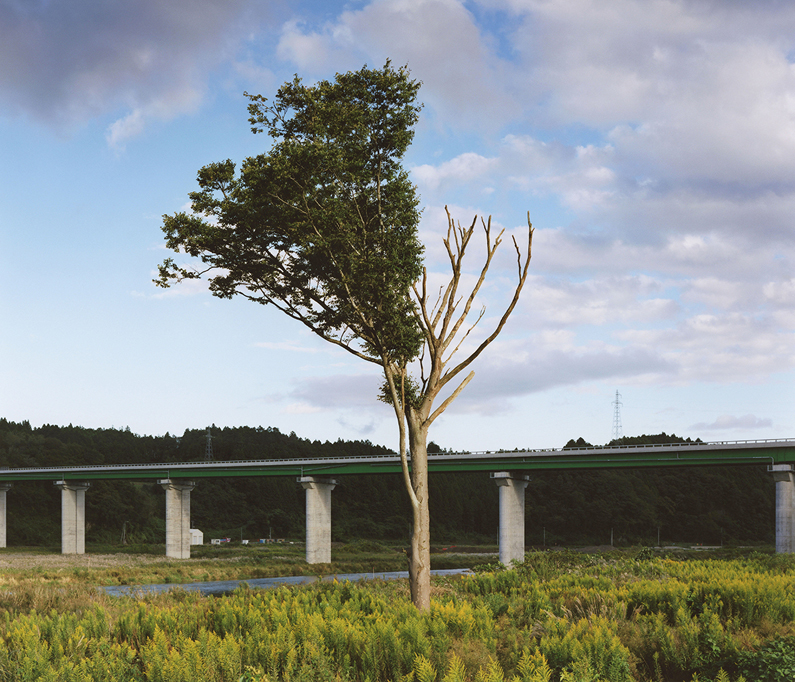Watch, Read, Listen
Recent Additions to the Collection MOMAT Collection Newsletter of the National Museum of Modern Art, Tokyo Hatakeyama Naoya, Rikuzentakata-shi, Iwate on October 6, 2019 from Untitled(Tsunami Trees), 2019
Back
Rikuzentakata-shi, Iwate on October 6, 2019 from Untitled (Tsunami Trees)
2019
Chromogenic print
108.0 × 126.6cm
Purchased FY2020
Why is half of the tree in the center of the picture withered and dead, while the other half is lush with foliage? The date, place name, and phrase “tsunami trees” in the title imply that this is a result of the tsunami during the Great East Japan Earthquake of March 2011.
The trees in the Untitled (Tsunami Trees) series were struck by the tsunami, including this tree in Rikuzentakata, and Hatakeyama photographed them in various parts of the wide disaster-affected area. The series was shown in the DOMANI: The Art of Tomorrow 2020 – Landscapes in Our Age: Scarred and Reborn exhibition at The National Art Center, Tokyo in early 2020, and three of the works have been newly acquired for the MOMAT collection.
The photographer Hatakeyama Naoya earned acclaim early in his career for series documenting limestone mines and the concrete urban landscapes that are these mines’ eventual outcome. Since then he has continually engaged with relationships between the natural world and human beings from various perspectives, and his photographs combining intellectual rigor with an extraordinary level of aesthetic perfection have earned great acclaim both in Japan and overseas.
The 2011 earthquake was a turning point for Hatakeyama’s work. He is from the city of Rikuzentakata, which was devastated by the disaster, and experienced the loss of his mother and the destruction of his parents’ home in the tsunami. Hatakeyama subsequently made many trips back to Rikuzentakata to document the post-earthquake landscape. These photographs appeared in several exhibitions and books, along with photos never previously released, such as personal snapshots of his hometown before the earthquake. The foundation of his activities, as a photographer who explores the state of the world through his camera, was profoundly shaken, and this disruption in itself became a subject of artistic exploration, as reflected in the change in his artistic practice.
After this period of exploration, he began work on the Untitled (Tsunami Trees) series in 2017 after encountering the Japanese walnut tree appearing in this work. Hatakeyama wrote of this tree, “In it I can see two different continuums of time, one that lasted until yesterday, and one in which we are living now.”1
MOMAT is collecting works related to the earthquake on an ongoing basis. We believe the museum should play the role of considering, through works of art, what people experienced and how the disaster impacted our society at the most profound of levels, and communicating these ideas and experiences to future generations. Over the decade since the earthquake, we have continued to question how we should engage with and convey its reality and memory, and in this process the Tsunami Trees series offers us a wealth of suggestions.
[Notes]
- Hatakeyama Naoya, “Kesen-gawa no onigurumi [Japanese Walnut on the Kesen-gawa River,” Nihon Keizai Shimbun, March 8, 2020.
(Gendai no me, Newsletter of The National Museum of Modern Art, Tokyo No. 636)
Release date :


